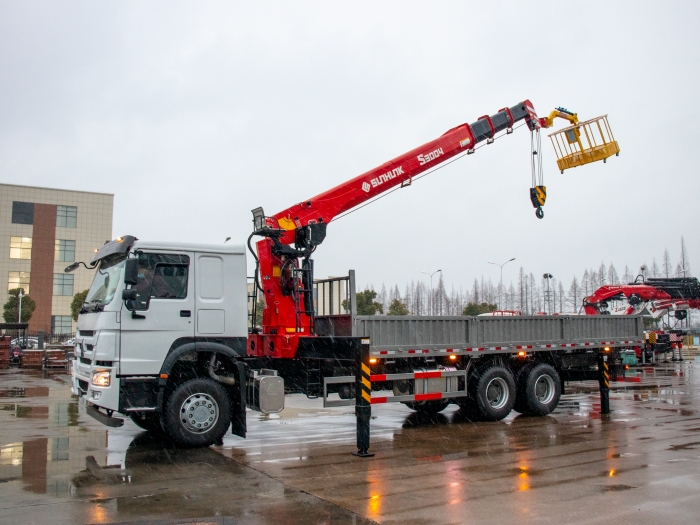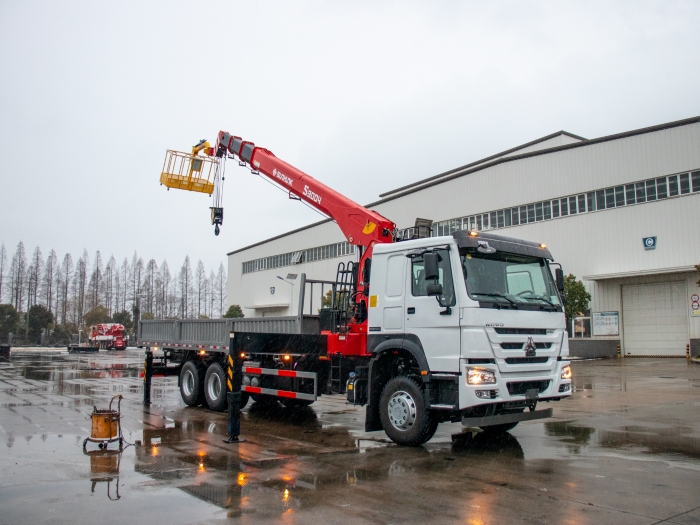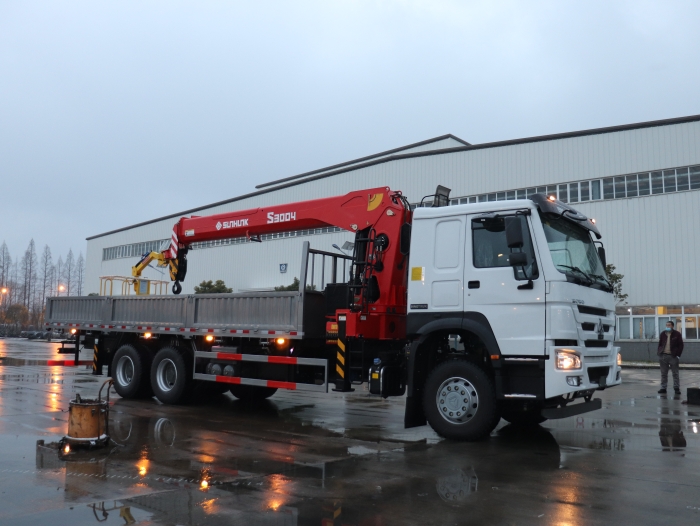- PRODUCTS
- SOLUTION
- SERVICE
- NEWS
- ABOUT US
Ensure boom crane operation safety and efficiency by adhering to a pre-operational checklist, using modern technology like remote control systems, and implementing regular maintenance schedules.
Cranes are versatile machines used in various industries, each designed for specific tasks. Mobile cranes are flexible and can move around sites or on public roads; they're perfect for projects requiring mobility and variable lifting locations. Tower cranes dominate the skyline of any construction site and are the go-to for high-rise building projects due to their vertical and horizontal reach. Overhead (or bridge) cranes move loads along two axes above the floor in industrial environments, ideal for assembly lines or storing heavy materials.
The working principle of cranes revolves around leveraging mechanical advantage to lift and move heavy loads. The key components include the boom, which determines the crane's reach; the hoist, responsible for lifting and lowering the load; and the counterweights, which balance the crane during operations. Effective crane operation hinges on understanding load charts, which provide crucial information like maximum lifting capacities and boom lengths. Mastery of these principles ensures operators can harness the crane's full potential while maintaining safety.

Thorough preparation is pivotal for safe crane operation. A pre-operational checklist includes inspecting the crane's mechanical, hydraulic, and electrical systems to ensure everything functions correctly. Assessing the work environment is also crucial; this involves checking for overhead obstacles, ground conditions, and proximity to power lines. Equipping operators with the right safety gear, such as hard hats, high-visibility clothing, and safety boots, further minimizes risk.
Maintaining safety during crane operation is paramount. Key measures include ensuring the load is securely rigged and does not exceed the crane's maximum lifting capacity. Operators should always keep a clear line of sight on the load and use spotters or cameras when visibility is impaired. Establishing and enforcing a safety perimeter around the crane prevents unauthorized access and minimizes the risk of accidents.
Knowing how to respond to a load becoming uncontrollable is crucial; strategies include slowly lowering the load or moving it to a safe area if possible. Regular training sessions on emergency scenarios and safety drills play a critical role in preparing the crew for unexpected events, significantly reducing the likelihood of accidents.
Additionally, this document incorporates relevant Wikipedia hyperlinks for key terms to provide readers with easy access to further information on topics such as cranes, mechanical advantage, and load charts.
Experienced crane operators bring a wealth of knowledge that can significantly boost efficiency and accuracy in crane operations. One critical technique is planning the lift path in advance, considering the most direct route that avoids obstacles, which minimizes the time taken per lift. Additionally, mastering the crane's controls through continuous practice enables operators to execute movements with precision, reducing the likelihood of errors that can cause delays.
Moreover, implementing two-way communication systems between the operator and ground personnel ensures that lifts proceed smoothly and efficiently. This can include radios or hand signals, which help in making real-time adjustments to the operation, further enhancing safety and efficiency.
Furthermore, experienced operators recommend regularly reviewing and adjusting the lifting plan based on current site conditions and obstacles. This dynamic approach allows for the anticipation and mitigation of potential issues before they arise, ensuring that operations proceed without unnecessary interruptions.
A well-maintained crane experiences fewer breakdowns, which directly translates to reduced downtime and higher productivity. Creating a comprehensive maintenance schedule involves routine checks and services at intervals recommended by the manufacturer, focusing on critical components such as the hoist, brakes, and safety devices.
Preventative maintenance is particularly effective in identifying and addressing potential issues before they lead to significant malfunctions. For example, replacing worn-out cables and inspecting hydraulic systems for leaks can prevent unexpected failures that could otherwise halt operations.
Data-driven maintenance strategies have proven beneficial. By analyzing operational data and maintenance records, operators can identify patterns and predict when parts might fail or require service, allowing for proactive maintenance that minimizes disruption to operations.
Transitioning to these practices not only enhances safety but also significantly improves the operational efficiency of cranes. Incorporating these strategies, supported by empirical data and the collective expertise of seasoned operators, ensures that crane operations run smoothly and efficiently, maximizing productivity and minimizing downtime.
For additional insights into crane operations and maintenance, readers can explore resources like the Crane Inspection and Maintenance Record and Preventative Maintenance Strategies on Wikipedia, which provide comprehensive information on these essential aspects.

Wind speed is a crucial factor; for instance, most manufacturers recommend halting crane operations if wind speeds exceed 20 miles per hour (approximately 32 km/h) because high winds can significantly affect the crane's stability and load control. Operators must always consult the crane's load chart, which often includes wind speed restrictions, to ensure safe operation under current conditions.
Ground stability is another vital consideration. Cranes require a solid foundation to operate safely. Before setup, assessing the ground conditions to ensure that it can support the crane and the load is essential. This might involve using outrigger pads or mats in soft ground conditions to distribute the weight more evenly and prevent sinking.
Operating in confined spaces requires precise maneuvering and planning. In such scenarios, using smaller, more maneuverable cranes like spider cranes can be beneficial. Additionally, employing advanced technology such as cameras and proximity sensors can help operators navigate tight spaces safely.
For operations in high-risk areas, such as close to power lines or over water, specialized strategies become necessary. Implementing safety measures like using non-conductive tag lines to control the load or employing a spotter who can provide real-time feedback to the operator can significantly mitigate risks.
In both scenarios, continuous training and drills play a critical role. They ensure that operators and ground personnel are familiar with the specific challenges these environments present and can respond effectively to any issues that may arise.
This approach, coupled with detailed, actionable advice, equips operators with the knowledge they need to adapt to and overcome the challenges presented by varying operating environments and conditions.
For more information on crane safety and operation in diverse environments, visiting links to resources like Crane Safety and Ground Conditions for Construction Equipment on Wikipedia can provide additional insights into ensuring safe and efficient crane operations under various conditions.
The integration of modern technology in crane operations significantly enhances safety and efficiency. Remote control operation stands out by allowing operators to control cranes from a safe distance, reducing the risk of accidents in hazardous environments.
Automation systems further revolutionize crane operations. Automated features like load moment indicators (LMIs) and anti-collision systems enhance operational safety by providing real-time data and preventing potential accidents. For instance, LMIs alert operators if a load exceeds the crane's capacity, while anti-collision technology prevents cranes from entering predefined no-go zones or colliding with other structures.
Moreover, GPS and telematics technology facilitate precise positioning and efficient fleet management, enabling operators to monitor crane movements and optimize routes for material transport, significantly reducing operation time and fuel consumption.

The importance of equipment upgrades cannot be overstated in ensuring operational efficiency and safety. Upgrading to the latest crane models or retrofitting existing equipment with modern technology can dramatically improve performance. For example, newer cranes often feature more efficient engines and control systems, which not only reduce emissions but also provide smoother and more precise control over crane movements.
When it comes to selecting the right crane and attachments for specific job requirements, considering the lift capacity, reach, mobility, and the specific environment in which the crane will operate is crucial.
A comparative analysis of crane types based on key performance indicators (KPIs) such as lift capacity, reach, and fuel efficiency can aid in making informed decisions. This approach ensures that the selected crane not only meets the project's needs but also operates at peak efficiency.
Incorporating transitional phrases like "furthermore," "for instance," and "moreover" enhances the flow of the narrative, making the content more engaging and easier to follow. Additionally, embedding Wikipedia links provides readers with access to further detailed information on topics such as Remote Control Operation and Automation in Construction, offering a deeper understanding of the advancements in crane technology and their impact on the industry.